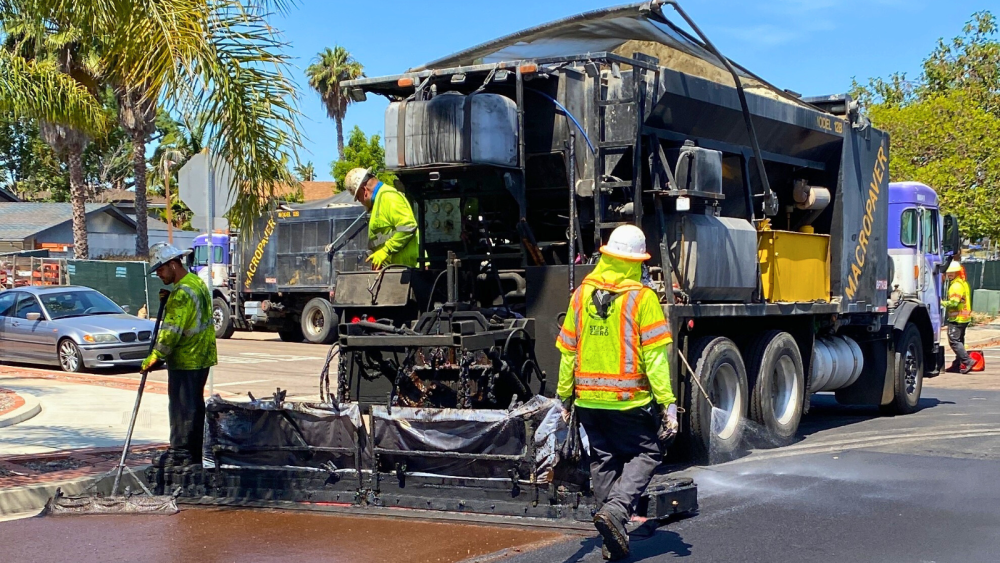Road Repair Project Begins in Otay Mesa

The community of Otay Mesa will soon have improved streets, thanks to the continued efforts of the City of San Diego’s slurry seal program, part of an overall effort to repair and resurface roads citywide. Work began on Saturday, Feb. 1, for this slurry seal project focused on Otay Mesa roads.
Slurry seal is used to prevent street deterioration, which is vital to improving the overall condition of San Diego’s network of roads. It reduces the need for a more costly asphalt overlay and reconstruction for badly deteriorated streets. Information about different types of street repair can be found on the City’s Transportation webpage.
Slurry seal is often completed in phases over several days or weeks. Multiple slurry seal projects are happening across the City simultaneously and are often coupled with other upgrades to increase safety and mobility for all modes of transportation.
The latest work as part of Slurry Seal Project 2522 will be in construction, weather permitting, through the month of February. The following roads will be resurfaced:
- Marconi Drive
- Avenida Costa Blanca
- Progressive Avenue
- Innovative Drive
- Avenida De La Fuente
- Kerns Street
- Drucker Lane
- Siempre Viva Road
- Avenida Costa Brava
- La Media Road
- Corporate Center Drive
- Del Sol Boulevard
- Avenida Costa Del Sol
- Avenida Costa Norte
- Avenida Costa Sur
- Hollister Street
- Del Sol Boulevard
- Beyer Boulevard
- Firethorn Street
- Palm Avenue
- Twining Avenue
- Manya Circle
- Manya Street
- Blackshaw Lane
- Isla De La Gaita
- Peterlynn Court
- Layla Court
- Marzo Street
Slurry seal is a cost-effective pavement preservation method consisting of asphalt emulsion, sand and rock. This mixture is applied to the street surface at an average thickness of a quarter inch and extends the life of streets that are already in good condition.
Streets are selected for resurfacing through a pavement management system that helps determine when to schedule streets for repair. Each street segment is assigned a Pavement Condition Index (PCI) score based on the pavement’s roughness and cracks.
The PCI score is one of many factors the City uses to schedule road repair. Other factors include traffic volume, mobility and transit connections, maintenance history, other construction projects and available funding. Residents can view the PCI scores for their neighborhood streets and maps of planned street repair by visiting StreetsSD.
The City’s Pavement Management Plan relies on the 2023 Pavement Condition Assessment and summarizes current street conditions in San Diego, while also identifying the funding needs to improve the overall street network.
